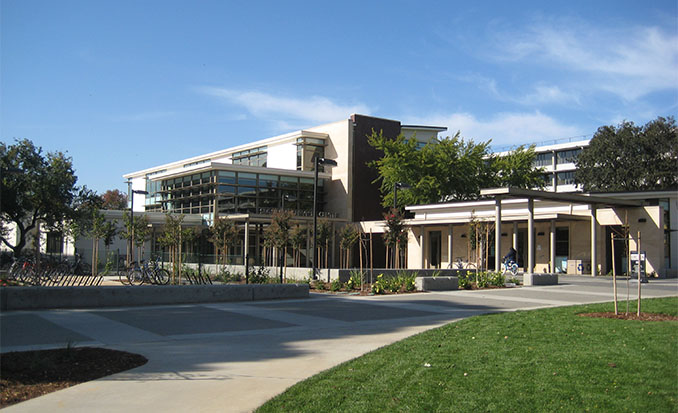
The project was able to achieve 42.3% energy savings with respect to an ASHRAE 90.1-2004 baseline including the contribution of the Photovoltaic system (38% if PV is not accounted for). In addition, it achieved a 34.3% energy savings based on T24-2005.
The above was achieved by a series of measures that included:
- Hybrid Chilled beam-VAV system: One 100%OA AHU was used to serve the internal spaces through a conventional VAV system and to provide primary air to the chilled beams for the perimeter spaces.
- Heat recovery and direct evaporative cooling systems on the main air handling unit.
- Demand control ventilation strategy which was possible by having a VAV box upstream of the chilled beams.
- Day lighting and occupancy sensor controls: Day lighting modeling was performed for strategic location and solar tubes were provided as deemed necessary to minimize lighting energy use.
- High performance glazing systems with integrated shading systems (on the west façade).
- Thermally broken insulating wall system (continuous R-5 insulation backing the R-15 batt insulation between the studs).
On-demand pumping control sequence allowing the building to shut down its chilled water pumps and use the available pressure from the site chilled water network when possible.
Because the chilled beam system operates close to the outdoor air requirements for occupancy, this allowed the design to be based on 100% outside air. The internal spaces had their cooling airflows close to the outdoor air requirement which allowed them to be fed from the same unit. All spaces were provided at least 30% more outdoor air than required by ASHRAE 62.1 with minimal penalty on the energy side due to the heat recovery/direct evaporative systems in the main AHU.
Although chilled beam HVAC system popularity is increasing in the US as an efficient hydronic system that will reduce substantially fan power, this project used a hybrid chilled beam-VAV system which was a new and innovative way to capture the best of the two worlds.
The building used chilled beams for all the perimeter spaces. The internal spaces were served by a conventional VAV system from the same 100%OA unit providing primary air to the chilled beams. This was possible because the ventilation air in the internal spaces was close to the cooling air requirements. In addition, VAV boxes were provided upstream of the chilled beams that allowed primary air to be modulated when possible and to provide a heating source by incorporating a hot water coil. This in its turn allowed the chilled beams to be selected as two pipes cooling only making their weights less than 75lbs and avoiding any seismic bracing for the chilled beams. This proposed system used only 50% of the proposed cooling energy used for a baseline T24-2005 building.
Occupied in summer of 2011, the building has operated without any major maintenance issues. The chilled beams operate with no moving parts or filters and are very easily maintained. They generally need only basic cleaning every 3-5 years with an industrial vacuum to clean the coils.
The Segundo Service Center was able to tap into the University’s steam and chilled water system, which allowed for reduced invasive piping and energy consumption. Based on the kWh and therm savings highlighted in the Energy Efficiency Section, the building was able to achieve an annual CO2e reduction of 241.8 metric tons over the 588.5/year standard allowed for an ASHRAE 90.1-2004 baseline building.


